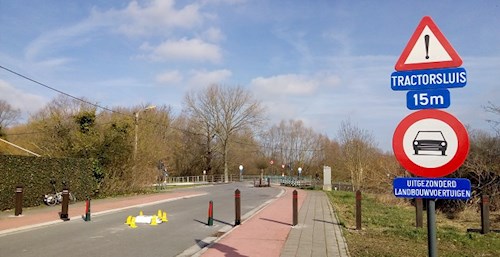
The most visible upgrades on the section of the cycle highway F1 between Mechelen and Vilvoorde in Belgium is the new asphalt surfacing on the towpath along Zenne and two new cycling bridges across the river. But safety and comfort on a cycle highway is determined also by solutions that are nearly invisible from the user perspective. One of such changes is a “tractor gate” on the crossing of Weverstraat, Nedergemlaan and Begijnhofstraat in Zemst.
The “tractor gate” (Dutch: tractorsluis) is a solution that allows agricultural vehicles – tractors – through but blocks regular cars. Pedestrians and cyclists can pass through as well. Tractor gate is an example of an application of the principle of filtered permeability in rural context. Through car traffic is kept away from local rural roads, while farmers can still easily access their fields.
Filtered permeability is not new in Zemst. The connection between Begijnhofstraat and Weverstraat was closed already in 1990 with a row of bollards, reducing the complexity of the crossing. In December 2018 also the connection between Nedergemlaan and Weverstraat was closed, this time with “tractorsluis”.
The tractor gate on Weverstraat is a concrete block 20 cm high. Such solutions are sometimes called “sump busters” – they work by demolishing the oil pan of an unauthorised vehicle trying to pass. Simple, but efficient. Sump busters are also sometime used as “bus gates”.
“The main motivation behind the new tractor gate was to remove through traffic from residential areas in Weerde and Eppegem. In the morning peak traffic jams on A1 motorway in the direction of Brussels start already around Zemst, so drivers try to escape to local roads. This was a danger for people living in the area. But the works on the cycle highway F1 provided an extra push to install the measure.” – explains Tom Puttemans, a local member of Fietsersbond. The new measure also helps cycling, and in more ways than one:
- Increases safety and reduces interruptions on the cycle highway F1, perpendicular to the street. Therefore, it makes it more feasible to travel longer distances by bicycle.
- Encourages cycling on shorter distances – to neighbouring town or village, by offering cyclists a shortcut unavailable for cars. For example, between southern Weerde and centre of Eppegem you can either cycle 1.5 km or drive over 3 km.
- Reduces motorised traffic on local roads, making cycling or walking in the countryside more pleasant.
An added benefit is that blocking Weverstraat for through traffic freed a lot of space on the crossing. Wide areas for turning and dedicated cycle paths are no longer necessary and the junction will be redesigned to provide more greenery and a communal space.
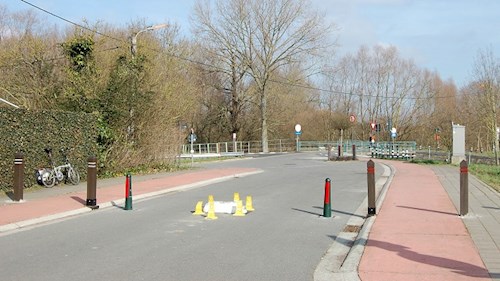
New tractor gate as seen from Nedergemlaan.
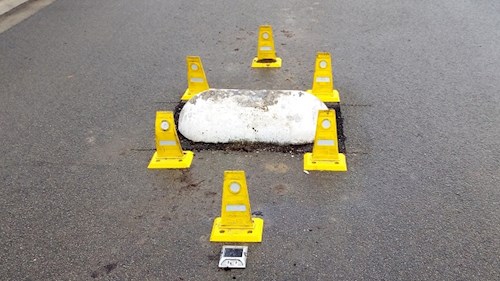
The tractor gate on Weverstraat is a concrete block 20 cm high.
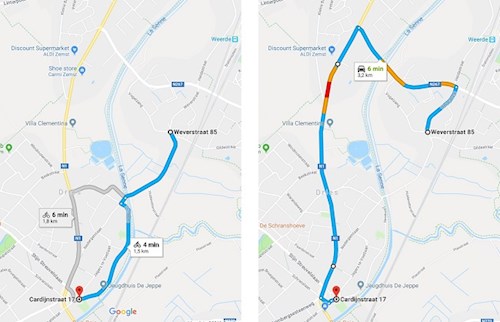
Comparison of route between southern Weerde and centre of Eppegem by bike (1.5 km) and by car (3.2 km). Filtered permeability on local roads is an additional incentive to walk or cycle short distances.
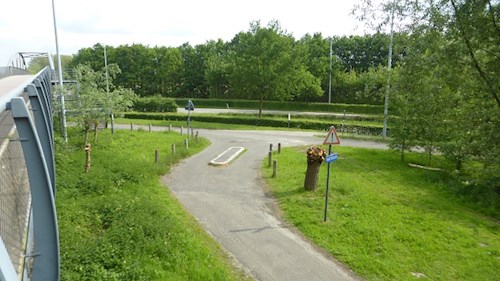
Another “tractorsluis” blocking access to service roads along R22 north of Vilvoorde.
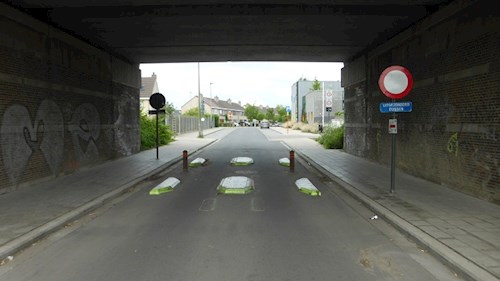
Similar solution used as “bus gate” in the tunnel on Nieuwe Rolleweg in Vilvoorde.
